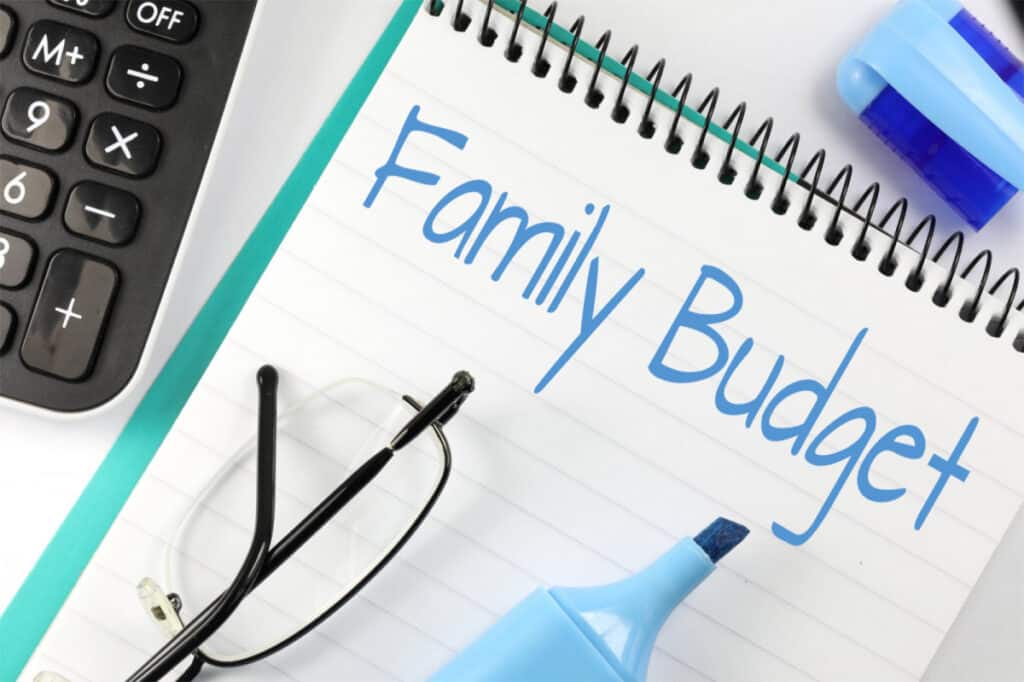Keeping your family’s finances in check is no easy feat. With groceries, bills, and the occasional splurge, keeping track of all the money coming in and out of the household can be tricky. It’s time to take control of your family budget! If you’re looking for a guide on how to get started with family budgeting, you’ve come to the right place.
Let’s dive into setting up a budget that works for you and your family.
What is a Family Budget?
A family budget is a financial plan that outlines the income and expenses of a household over a specified period, typically monthly or annually. It helps families keep track of their finances, manage their expenses, and plan for future financial goals.
The family budget usually includes all sources of income, such as salaries, rental income, or investment income, as well as all expenses, such as housing, food, transportation, utilities, entertainment, and savings. By comparing income to expenses, families can identify areas where they can reduce spending and increase savings.

How to create a family budget
Creating and sticking to a family budget can help families to achieve financial stability and avoid debt. It can also help them to plan for important financial goals, such as saving for a down payment on a house, paying for a child’s education, or preparing for retirement.
Here are the steps to follow:
Step 1: Determine Your Income
First, you have to know how much money comes into your household each month. This includes salary income, investment income, side hustles, and any other sources of regular income. With this information, you can start planning how to use those funds more effectively.
Step 2: Track Your Expenses
Now that you know our monthly income, expense tracking is next. Tracking your family expenses will involve taking note of every expense throughout the month—from the small stuff like getting coffee or snacks from the store all the way up to mortgage payments and other large bills. Once you have tracked all these expenses over a month or two (or even longer), it will be easier to identify patterns and areas where you could save more money.
Step 3: Make a Plan

Now that you have your income and expenses ready to go, it’s time to make a plan! The goal here is to create spending categories that align with what matters most to you and your family—whether saving more for vacations or investing in college tuition funds for the kids—and then create realistic budgets within those categories.
For example, if eating out is essential to you as a family, but expensive restaurants are not within your current budget, try setting up an “eating out” category with enough room for a few meals each month without breaking the bank. This will help ensure everyone meets their needs without going over budget.
Now you have the steps to create a workable family budget, you can employ one out of several budgeting techniques to put your plans into action.
Family Budgeting Techniques
Depending on your goals and specific family circumstances, there are a few budgeting techniques to consider.
- Create a Monthly Budget: This is the most basic and effective budgeting technique. Start by listing your income sources and expenses, including fixed expenses like rent/mortgage, utilities, car payments, insurance, and variable expenses like groceries, dining out, entertainment, etc. Once you have a clear picture of your income and expenses, allocate your income to cover all expenses and plan for savings and investments.
- The Envelope System: This simple budgeting technique may appear old-fashioned, but it is just as effective as any other method. It involves allocating cash for each expense category and placing it in separate, clearly labeled envelopes. For instance, you can put some money for groceries in one envelope and entertainment expenses in another. Once the cash in the envelope for a particular category is used up, you cannot spend more in that category until the next month.
- 50/30/20 Rule: The 50/30/20 rule is a budgeting method that requires you to allocate 50% of your income for essential expenses, like housing, food, transportation, and bills, 30% for discretionary expenditures, such as entertainment, travel, hobbies, and dining out, and 20% for savings and investments.
- Zero-Based Budgeting: The zero-based technique involves accounting for every dollar of your income and assigning it to a specific expense or savings category. Start with your income and allocate it to all expenses, including discretionary spending and savings, until you have zero dollars left.
- Pay Yourself First: This technique prioritizes saving and investing over spending and ensures you build wealth before anything else. It entails setting aside a percentage of your income for savings and investments before allocating the rest to expenses.
Seize Control of Your Family Finances with Budgeting
Family budgeting can be intimidating at first, but once you get into the habit of tracking your income and expenses every month, it becomes second nature! Start by determining your monthly income, followed by monitoring all of your expenses over time so you can identify patterns in spending habits. Finally, make a plan by creating realistic spending categories based on what matters most—this way, everyone’s needs are taken care of while staying within budget! With these tips in mind, there’s no better time than now to start taking control of your family finances!

